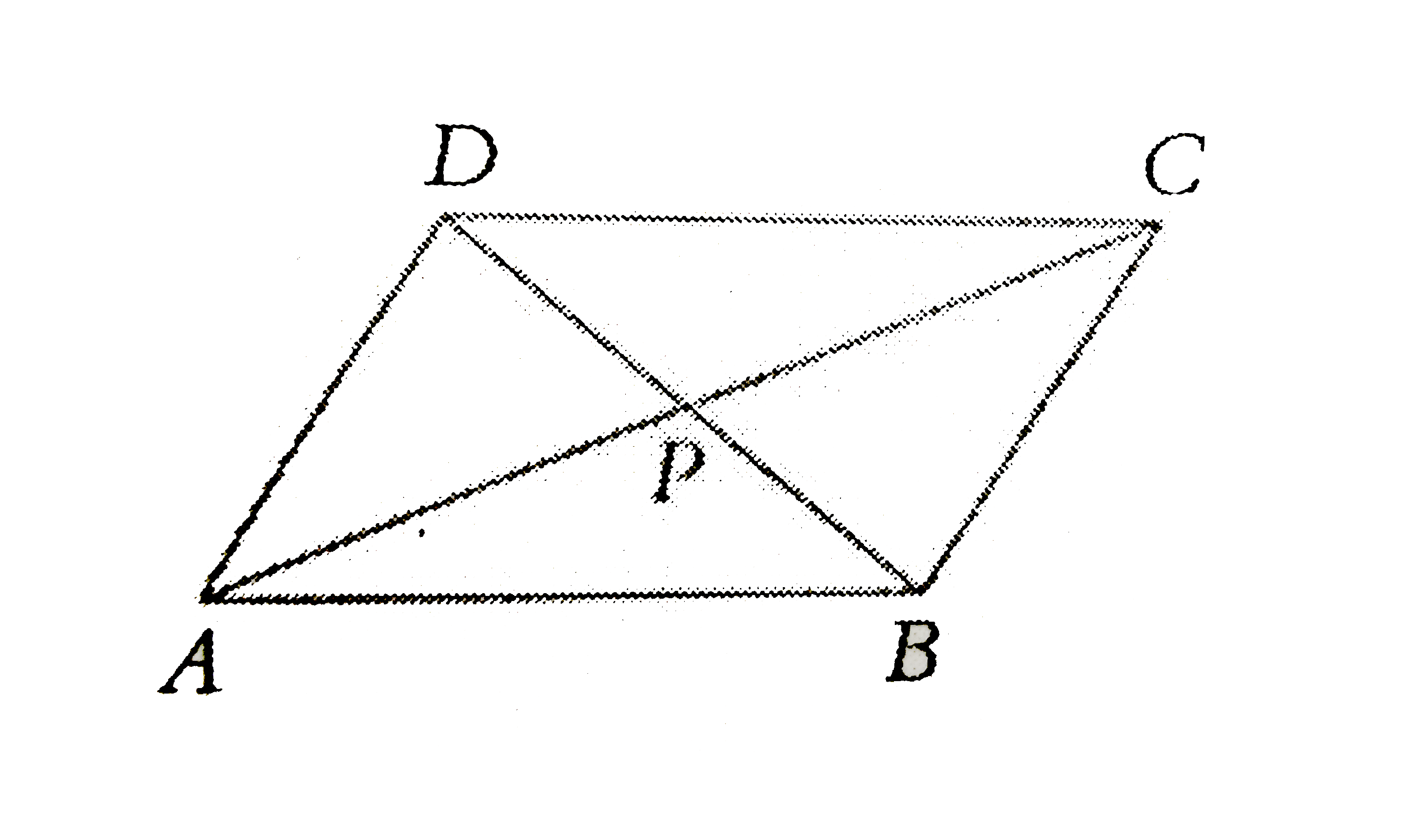In the given figure, □ABCD is a parallelogram. If DM ⊥ AC and BN ⊥ AC, then show that □BNDM is a parallelogram.

Video Solution
Text Solution
InΔADMandΔCBN,
∵⎧⎪⎨⎪⎩AD=CB(opposite sides of parallelogram)∠AMD=∠CNB(each90∘)∠DMA=∠BCA(alternate interior angles)
∴ΔADM≅ΔΔCBA (AAS therem)
Again, in ΔCDNandΔABM, (c.p.c.t)
Again, in ΔCDNandΔABN,
∵⎧⎪⎨⎪⎩CD=AB(opposite sides of a parallelogram)∠DCN=∠BAM(alternate interior angles)∠CN=AM(proved above)
∴ΔCDN≅ΔABM (SAS theorem)
⇒DN=BM (c.p.c.t)
Now, DM= BN and DN = BM
⇒□BNDMis a parallelogram. (∵pairs of opposite sides are equal)
Alternative Method :
Construction : Join BD which intersect AC at O.
Proof : In ΔADMandΔCBN,
∵⎧⎪⎨⎪⎩AD=CB(opposite sides of a parallelogram)∠AMD=∠CNB(each90∘)∠DAM=∠BCN(alternate interior angles)
∴ΔADM≅ΔCBN (AAS)
∴AM=CN ...(1)(c.p.c.t)

But since □ABCD is a parallelogram
∴AO=OC....(2)andDO=OB....(3)} (diagonals of a parallelogram bisect each other)
Substacting (1) from (2), we get
AO- AM = OC - CN
⇒ OM=ON ...(4)
Now, from (3) and (4), we can say that diagonals of a quadrilateral BNDM bisect each other.
Hence □BNDM is a parallelogram.
|
Topper's Solved these Questions
- QUADRILATERALSBOOK - NAGEEN PRAKASHANCHAPTER - QUADRILATERALSEXERCISE - Problems From NCERT/exemplar
11 Videos
- QUADRILATERALSBOOK - NAGEEN PRAKASHANCHAPTER - QUADRILATERALSEXERCISE - Exercise 8a
29 Videos
- PROBABILITYBOOK - NAGEEN PRAKASHANCHAPTER - PROBABILITYEXERCISE - Revision Exercise (very Short Answer /short Answer Questions)
10 Videos
- STATISTICSBOOK - NAGEEN PRAKASHANCHAPTER - STATISTICSEXERCISE - Revision Exercise
10 Videos
Similar Questions
Knowledge Check
In the given figure, ABCD is a parallelogram. The quadrilateral PQRS is exactly
 Aa squareBa parallelogramCa rectangleDa rhombus
Aa squareBa parallelogramCa rectangleDa rhombusIf ABCD is a parallelogram, then −−→AC−−−→BD=
A4−−→ABB3−−→ABC2−−→ABD−−→ABIn the figure, the area of parallelogram ABCD is
 AAB×BMBBC×BNCDC×DLDAD×DL
AAB×BMBBC×BNCDC×DLDAD×DL

In the figure above, ABCD is a parallelogram , and if AC=30 cm and BD=20 cm, find CP+DP.
View SolutionShow that if ¯¯¯¯¯¯AB=¯¯¯¯¯¯DC, then the figure ABCD is a parallelogram.
View SolutionIn the given figure ABCD is a parallelogram, AE ⊥ DC and CF ⊥ AD. If AB = 16 cm, AE = 8 cm and CF = 10 cm,find AD.

View SolutionABCD and APCR are the two parallelograms and AC is the common diagonal. Prove that PBRD is a parallelogram.
View Solution
In the figure above, ABCD is a parallelogram , and if AC=30 cm and BD=20 cm, find CP+DP.
View Solution


